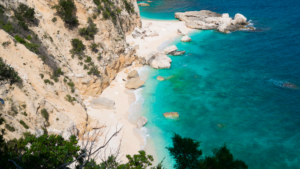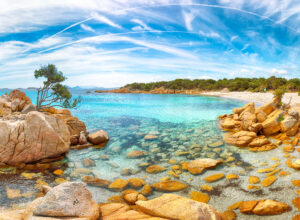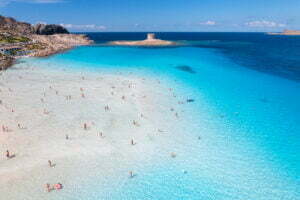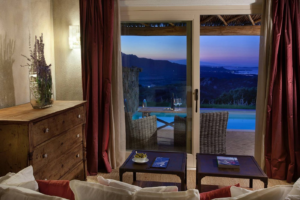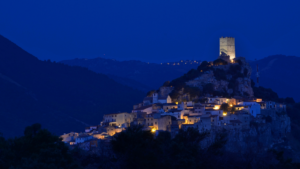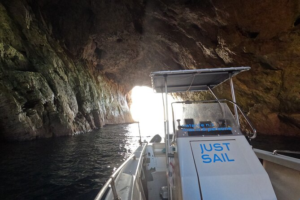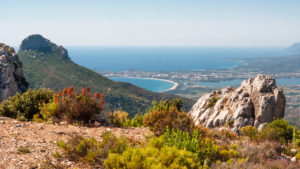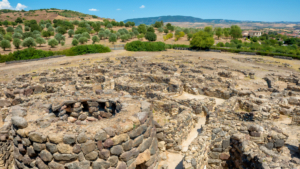Sardinia, known for its breathtaking beaches, hides a cultural and historical heritage just waiting to be discovered. Here’s a guide to the most beautiful museums to see in Sardinia, for a journey out of the ordinary, at any time of the year.
Museums to Visit in Sardinia: Overview
- Museo Archeologico (Archaeological Museum) – Cagliari: Dive into a journey spanning 7,000 years from Prehistory to the Early Middle Ages.
- Museo delle Maschere Mediterranee (Museum of Mediterranean Masks) – Mamoiada: Immerses you in the world of traditional Sardinian masks.
- Museo MAN (MAN Museum) – Nuoro: Hosts modern art exhibitions of national and international caliber.
- Museo Archeologico (Archaeological Museum) – Olbia: A dive into the ancient past of the Olbia area.
- Museo Etnografico Sardo (Sardinian Ethnographic Museum) – Nuoro: Offers an immersion into Sardinian history and culture through traditional costumes.
- MURATS – Samugheo: Tells the textile story of Sardinia through artwork and temporary exhibitions.
- Museo Archeologico (Archaeological Museum) – Dorgali: Allows you to closely observe 3,000 years of history in a single day.
- Casa Museo di Grazia Deledda (Grazia Deledda’s House Museum) – Nuoro: The birthplace of Grazia Deledda, the first female Nobel Prize winner for Literature.
- Compendio Garibaldino – Caprera: A historical park that hosts Garibaldi’s house.
- Museo Civico Giovanni Marongiu – Cabras: Offers an artistic journey from Prehistory to the Middle Ages with artifacts from all over Sardinia.
- Museo La Stazione dell’Arte di Maria Lai – Ulassai: Hosts contemporary art works by the artist Maria Lai.
- Museo del Carbone (Coal Museum) – Carbonia: Offers the opportunity to discover an important piece of Italian mining history.
- Ecomuseo Miniere Rosas (Rosas Mines Ecomuseum) – Narcao: Offers guided tours in each of its areas, including the Geo-mineralogical and Historical Museum, the Santa Barbara Gallery, and the Museum of Industrial Archaeology.
- Museo Civico (Civic Museum) – Sinnai: Offers an art experience, both ancient and modern, as a learning and sharing moment.
- Antiquarium Arborense – Oristano: Hosts a vast collection of archaeological finds that tell the story of the city and the region.
- Pinacoteca Nazionale (National Art Gallery) – Sassari: Offers a wide pictorial exposition from the Middle Ages to contemporary art.
- Casa Museo Antonio Gramsci (Antonio Gramsci’s House Museum) – Ghilarza: Offers the chance to visit the house where Antonio Gramsci lived from the age of seven to twenty.
Archaeological Museum of Cagliari
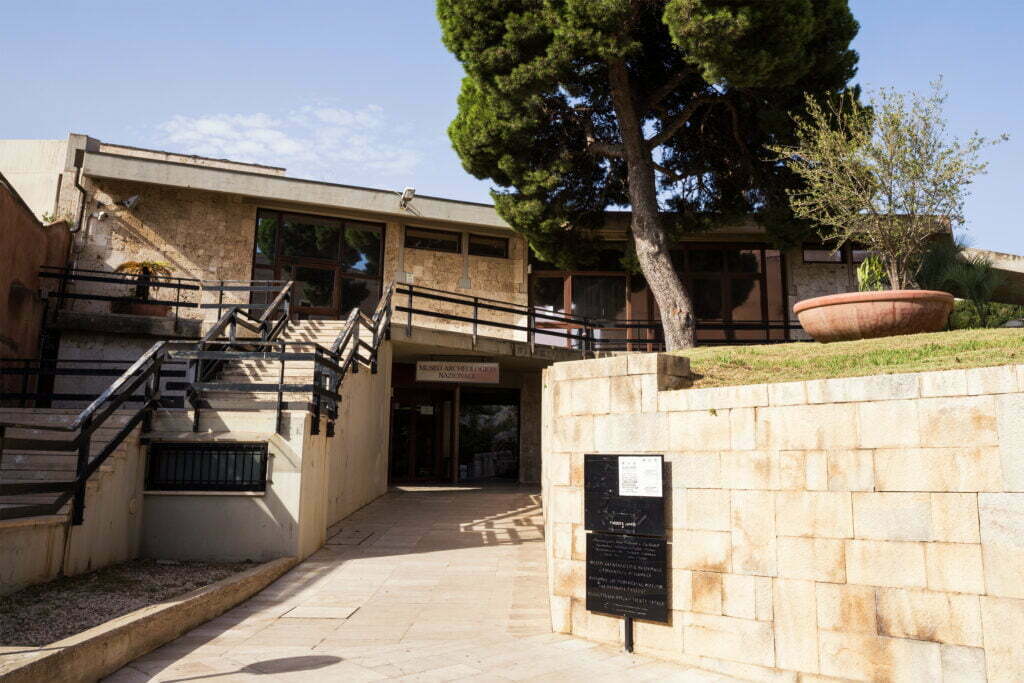

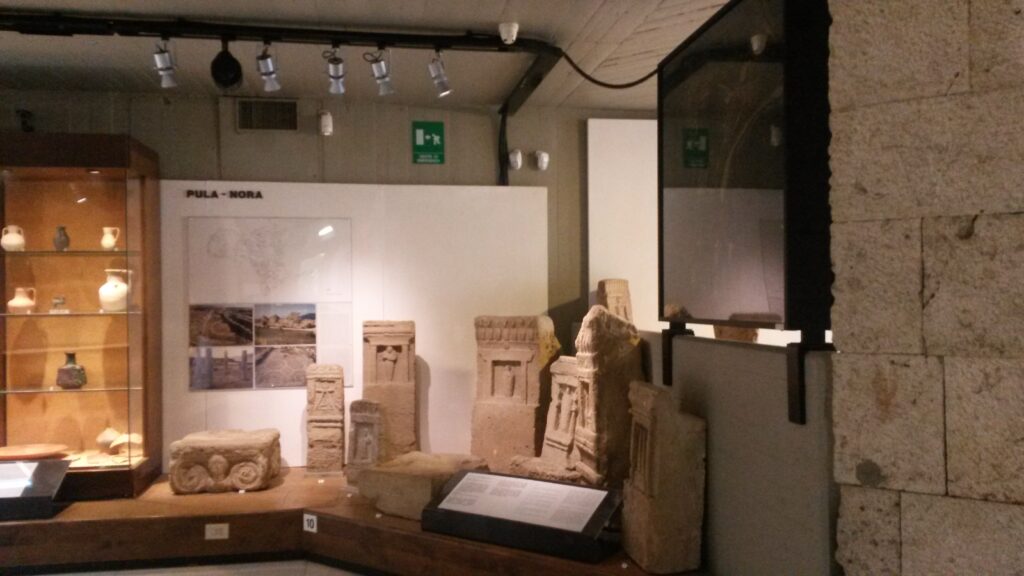

Imagine walking through the corridors of time, diving into a journey spanning 7,000 years, feeling history come to life before your eyes. This is what awaits you at the Archaeological Museum of Cagliari.
Located in the heart of the city of walls, next to the Tower of the Elephant, this museum is a hidden treasure that allows you to explore the history of Sardinia, from Prehistory to the High Middle Ages.
As soon as you cross the threshold, you will be greeted by majestic arches that lead you on a unique journey. Here, every object has a story to tell, every artifact is a piece of the puzzle that makes up the rich Sardinian history.
One of the museum’s most important pieces are the famous Sardinian bronzetti. These small figures, depicting tribe chiefs, warriors, and deities, are a distinctive symbol of Nuragic art, the prehistoric civilization of Sardinia. Observing them, you can almost hear the breath of ancient times, the heartbeat of a lost culture.
Another treasure of the museum is the Ozieri ceramics. These artworks, decorated and polished with a stick, date back to the Neolithic and are an extraordinary example of the artistic skill of the island’s early inhabitants.
But the journey doesn’t end here. Since 2014, the Archaeological Museum of Cagliari has been hosting some of the sculptures of Mont’e Prama, the oldest giants of the Mediterranean. These statues, up to 2 meters high, are a fascinating mystery that continues to pique the curiosity of scholars.
The Archaeological Museum of Cagliari is more than just a museum. It’s a portal to the past, a place where history comes to life. So, the next time you find yourself in Cagliari, don’t miss the opportunity to visit it. It will be an experience you won’t forget.
Museum of Mediterranean Masks in Mamoiada
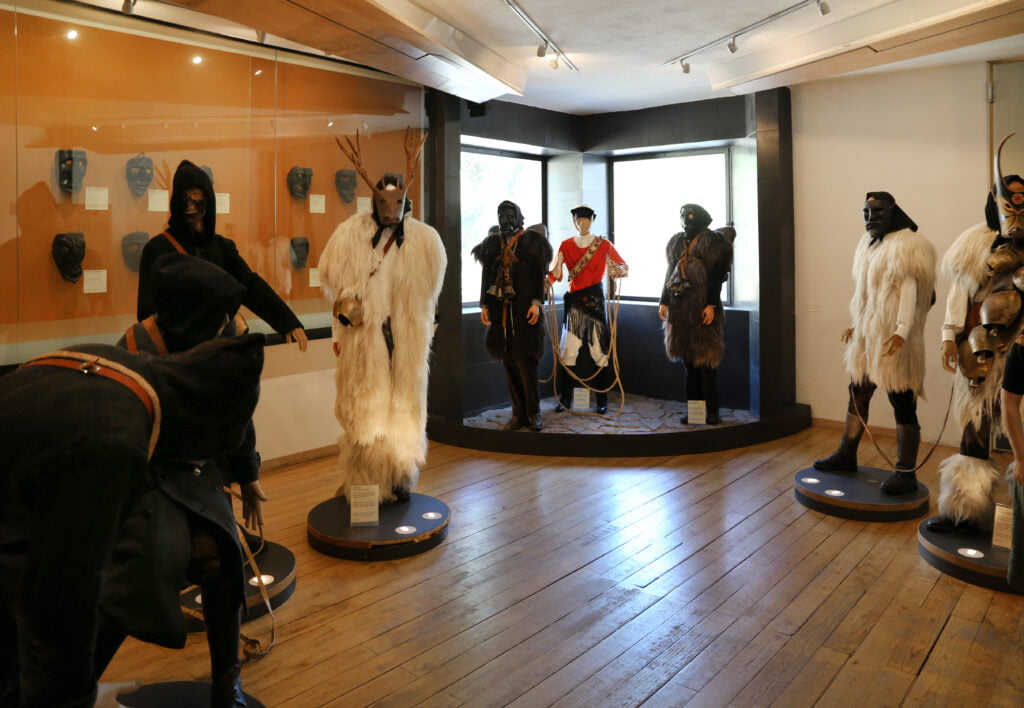

In the heart of Sardinia, in a small town called Mamoiada, there is a place where masks are not just a carnival accessory but a powerful symbol of tradition and culture. This place is the Museum of Mediterranean Masks.
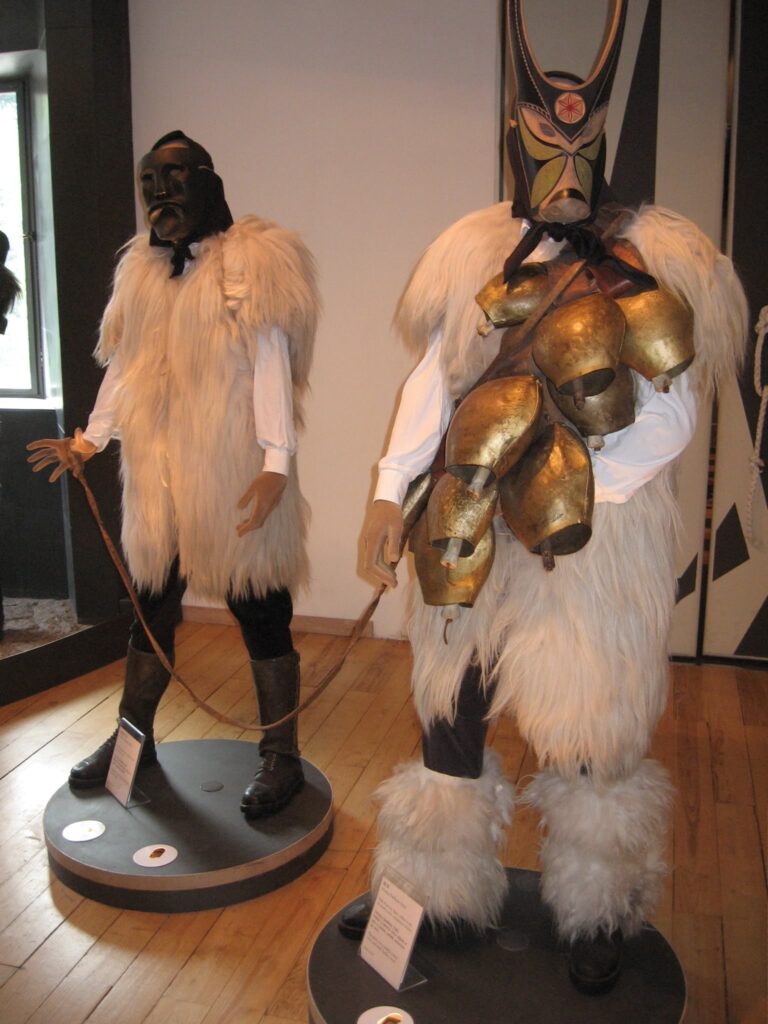

As soon as you step into the museum, you’ll be catapulted into a world of mystery and charm.
Here, masks are not just inanimate objects but living characters that tell stories of a bygone era.
The museum is divided into three halls, each offering a unique experience. In the first hall, you can admire a vast collection of traditional Sardinian masks, including the famous Mamuthones and Issohadores masks. Worn during carnival celebrations, these masks are a powerful symbol of the struggle between good and evil, between winter and spring.
In the second hall, you can dive into the world of Mediterranean masks. Here, you can discover how masking traditions intertwine through different cultures of the Mediterranean, from Spain to Greece, from France to North Africa.
In the third hall, you can explore the art and music that accompany the masks. Here, you can listen to traditional melodies that animate mask dances and admire the colorful and richly decorated costumes that complete the ritual.
The Museum of Mediterranean Masks is not just a place to admire masks. It’s a place where you can feel the heartbeat of Sardinia, where you can touch the strength of its traditions. So, when you’re in Sardinia, don’t miss the chance.
Museo MAN in Nuoro
In the heart of Sardinia, in a city known for its traditions and history, lies a bridge to the future: the MAN Museum in Nuoro. This museum, dedicated to modern art, is a beacon of creativity and innovation, a place where art challenges the boundaries of the possible and opens new horizons of thought.
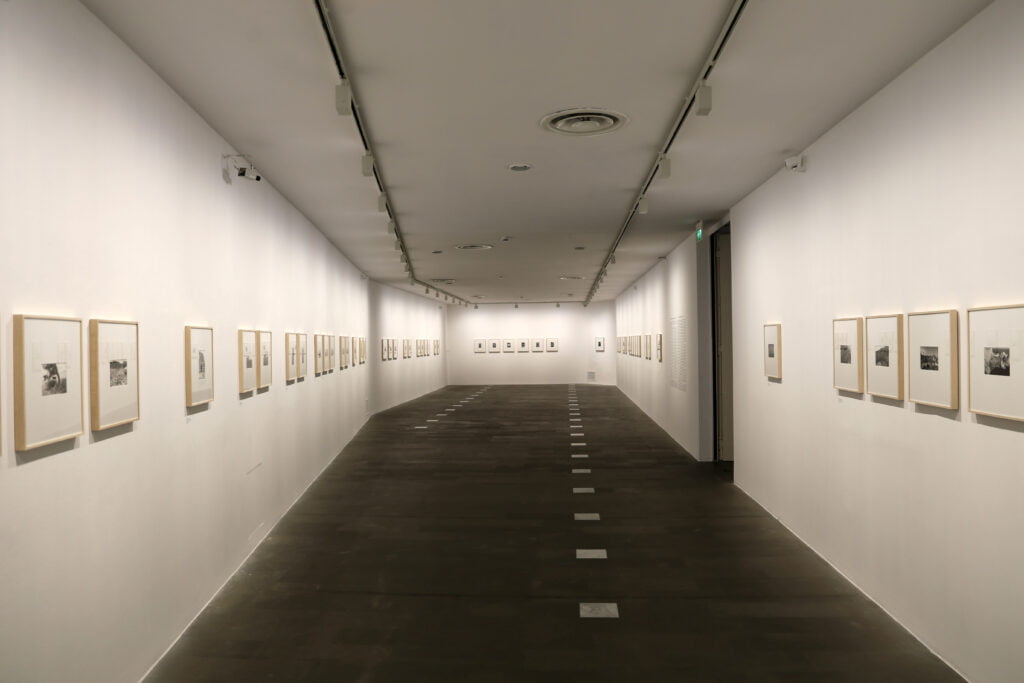

The MAN Museum is not just a place to admire works of art. It’s a meeting place, a dialogue, an exchange. Here, national and international artists meet to share their visions, challenge conventions, and explore new frontiers of art.
Every exhibition at MAN is a unique experience, a journey into a world of colors, shapes, and ideas. Here, you can admire works ranging from painting to sculpture, from photography to installation, works that will challenge you, surprise you, make you think.
But MAN is not just a museum. It’s also a research and training center, a place where artists can experiment, create, grow. Here, you can participate in workshops, conferences, meetings with artists, events that will allow you to enter the heart of modern art and discover its secrets.
Archaeological Museum of Olbia: A Dive into Olbia’s Ancient Past
The Archaeological Museum of Olbia is a hidden treasure in the heart of the namesake city, dedicated to the ancient history of the Olbia area. This museum is an essential stop for archaeology enthusiasts and those wishing to discover the ancient origins of the region.
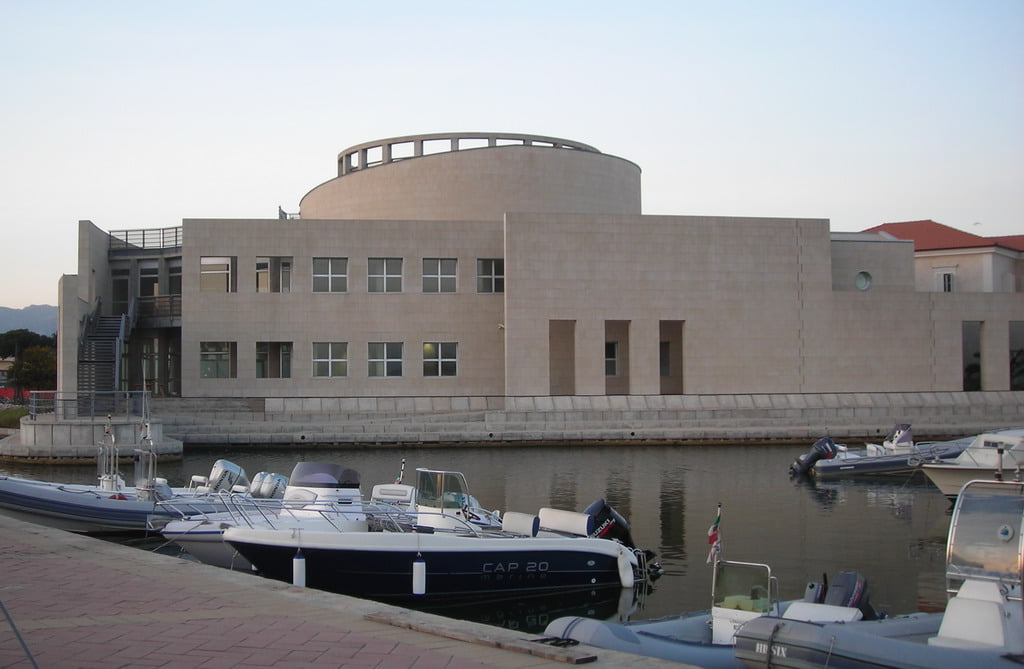

A Window into Olbia’s Ancient Past
The Archaeological Museum of Olbia is a crucial institution for understanding the historical roots of the area. Olbia, located on the northeastern coast of Sardinia, is one of the island’s oldest cities and played a strategic role in Mediterranean trade routes since ancient times.
The museum offers a comprehensive overview of the area’s history, from the first traces of prehistoric settlements to the Roman period and beyond. Through carefully restored and displayed archaeological finds, visitors can travel back in time and relive the millennia-old history of Olbia.
Key Archaeological Discoveries on Display
Inside the Archaeological Museum of Olbia, visitors can admire a rich collection of archaeological discoveries that narrate the region’s history.
Among the key discoveries are:
- Prehistoric Necropolises: The tombs and burial sites discovered in the surrounding area of Olbia reveal the funeral practices and beliefs of the ancient populations that inhabited the region.
- Nuragic Civilization: The museum also displays artifacts belonging to the Nuragic civilization, including ceramic items, weapons, and tools that testify to the city’s strategic importance in those times.
- Phoenician and Greek Presence: Traces of Phoenician and Greek influence are visible in ancient coins, ceramics, and trade artifacts that illustrate Olbia’s participation in Mediterranean trade routes.
- Roman Domination: During the Roman period, Olbia became a significant commercial center, and evidence from this era includes statues, coins, and everyday objects.
Engaging Initiatives for Visitors
The Archaeological Museum of Olbia goes beyond the static display of artifacts and commits to actively engaging visitors in the region’s history.
The museum organizes guided tours led by expert archaeologists, who take visitors through the halls and share insights on the displayed discoveries. These guided tours provide an educational and engaging experience that enriches the understanding of Olbia’s history.
The museum hosts special events, conferences, and workshops for adults and children, creating opportunities to interact with archaeology in a practical and fun way. These initiatives offer a new perspective on ancient history and invite visitors to become active participants in discovering Olbia’s past.
A Journey through Time in Olbia
The Archaeological Museum of Olbia is a portal that transports us on an exciting journey into the ancient past of the area. With its extraordinary exhibitions and engaging initiatives, the museum allows us to immerse ourselves in the region’s historical heritage and appreciate Olbia’s significance as a hub of culture and trade in the Mediterranean. A visit to this museum is a unique and passionate experience, an opportunity to dive into the past and discover the secrets buried beneath the modern city of Olbia.
Sardinian Ethnographic Museum (Museo del Costume) in Nuoro
To truly understand a culture, you must look beyond its artworks and monuments. You need to look at its costumes, its garments, its traditions. That’s why, to truly understand Sardinia, you must visit the Sardinian Ethnographic Museum in Nuoro.
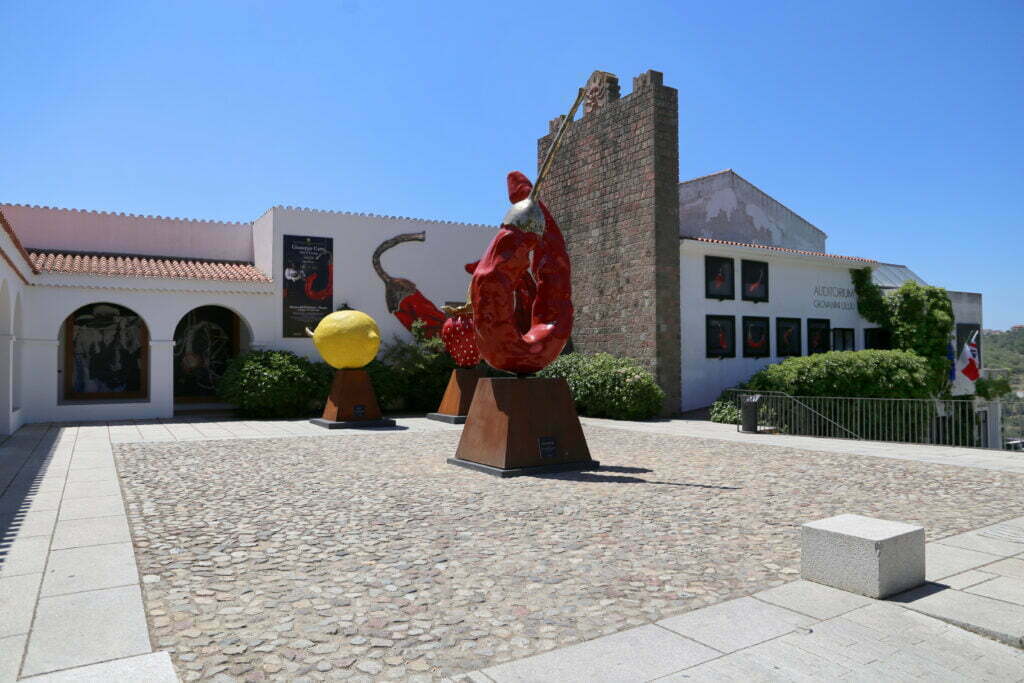

This museum, also known as the Museo del Costume, is a fascinating journey into the heart of Sardinian culture. Here, you can admire a vast collection of traditional costumes, each telling a story, a piece of Sardinian life.
Every costume is not just a garment but a symbol. The colors, the materials, the embroidery, every detail tells something about the person wearing it, about their family, about their land. Looking at these costumes, you can almost hear the heartbeat of Sardinia, the sound of its songs, the scent of its lands.
But the Sardinian Ethnographic Museum is not just a place to admire costumes. It’s also a place to discover the traditions, dances, music of Sardinia. Here, you can witness traditional dance performances, listen to the music of launeddas, discover the ancient weaving techniques.
MURATS in Samugheo
In the heart of Sardinia, in a small town called Samugheo, lies a treasure of art and tradition: MURATS, the Regional Museum of Sardinian Textile Art.
This museum, located in an ancient building in the historical center, is a fascinating journey into the world of Sardinian weaving, an ancient art dating back to the Neolithic period and still a vibrant and living part of the island’s culture today.
MURATS is not just a place to admire artworks. It’s a place to discover the history, techniques, symbols of Sardinian weaving. Here, you can see ancient looms up close, admire the skill of the weavers, discover the hidden meanings in the patterns of the fabrics.
The museum hosts a vast collection of textile art, including tapestries, blankets, rugs, traditional costumes. Each piece is a masterpiece of art and craftsmanship, an example of the creativity and passion that are at the heart of Sardinian culture.
In addition to the permanent collection, MURATS also organizes temporary exhibitions, workshops, cultural events. These initiatives offer the opportunity to delve deeper into textile art, to discover its connections with other cultures, to experience the weaving techniques firsthand.
Archaeological Museum of Dorgali
If you are passionate about history and archaeology, the Archaeological Museum of Dorgali is a place you absolutely must not miss. Located in the heart of Sardinia, this museum offers the chance to closely observe 3000 years of history in just one day.
The Archaeological Museum of Dorgali is not just a place to admire historical artifacts, but a place to discover the history of Sardinia and its people. Here, you can see prehistoric artifacts, Nuragic sculptures, Phoenician ceramics, Roman coins, medieval relics up close. Each object has a story to tell, a piece of the past to share.
One of the most important pieces in the museum is the collection of Nuragic bronze vessels. These vessels, dating back to the Bronze Age, are among the oldest and most valuable in the Mediterranean and represent an invaluable treasure for understanding the Nuragic culture.
But the Archaeological Museum of Dorgali is not just a place of preservation; it’s also a place of research and dissemination. Here, you can participate in conferences, workshops, temporary exhibitions, activities that will allow you to deepen your knowledge of Sardinia’s history and archaeology.
Grazia Deledda’s House Museum
In the heart of Nuoro, among the narrow cobblestone streets and stone houses, lies a place that gave birth to one of Italy’s greatest writers: Grazia Deledda. Her birthplace, now transformed into a museum, is a pilgrimage site for literature lovers and a treasure trove of history and culture.
The Grazia Deledda House Museum is a journey back in time, a return to the era in which the writer lived and wrote her most famous works. Each room, each object, each book tells a story, a piece of Grazia Deledda’s life.
In the museum, you can admire a vast collection of original manuscripts, including the first drafts of some of her most famous works. These precious documents offer a unique glimpse into the writer’s creative process, allowing you to follow her ideas from the first draft to the final version.
Beyond the manuscripts, the museum hosts a rich collection of images and photographs. These images, depicting Grazia Deledda at various moments of her life, offer an intimate and personal portrait of the writer.
Perhaps the most fascinating aspect of the museum are Grazia Deledda’s personal items. From her pens to her clothing, each object tells a story, a piece of the daily life of the writer.
Visiting the Grazia Deledda House Museum is not just an opportunity to learn more about the life and works of one of Italy’s greatest writers. It’s also a chance to immerse yourself in the atmosphere of a bygone era.
Garibaldi Compendium of Caprera
Caprera Island, a small jewel set in the crystal-clear sea of Sardinia, is famous not only for its beaches and waters but also for having been the home of one of Italy’s greatest heroes: Giuseppe Garibaldi. Here, among the granite rocks and Mediterranean scrub, lies the Garibaldi Compendium, a place that tells the story of a man and an island.
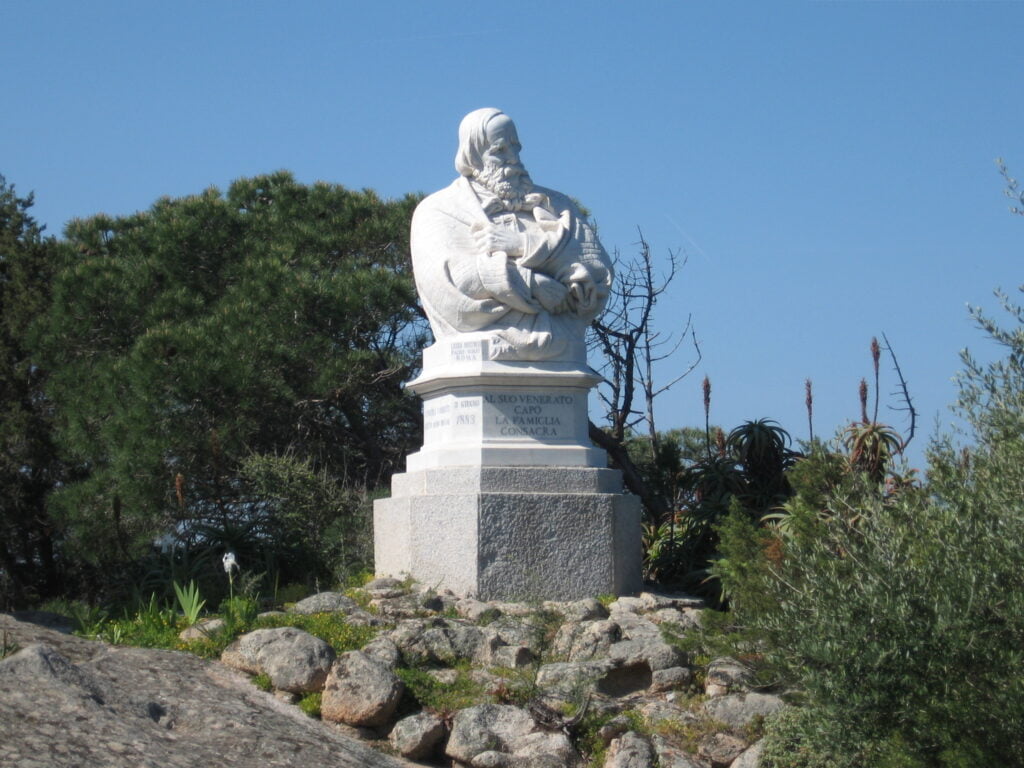

The Garibaldi Compendium is not just a museum but a real historical park. Here, you can walk along the paths that Garibaldi traversed every day, admire the breathtaking view of the sea he loved, and visit the house where he spent the last years of his life.
Garibaldi’s house, now transformed into a museum, is a place of great charm. Every object, every room, every detail tells a story, a piece of Garibaldi’s life. Here, you can see his bedroom, his kitchen, his study, places that still seem inhabited by the spirit of the hero of the two worlds.
But the Garibaldi Compendium is not only about Garibaldi’s house. It is also a place of memory, a place to remember the battles for Italy’s unification, the sacrifices, the hopes of a man and a people. Here, you can visit the Garibaldi Memorial, a monument that pays tribute to Garibaldi and his thousand.
The Garibaldi Compendium of Caprera is a place that every lover of history and Italian culture should visit.
Giovanni Marongiu Civic Museum of Cabras
If you are passionate about history and art, the Giovanni Marongiu Civic Museum of Cabras is a place you absolutely must not miss. Located in the heart of Sardinia, this museum offers a fascinating journey through millennia of history, from Prehistory to the Middle Ages.
The Giovanni Marongiu Civic Museum is not just a museum, but a real journey through time. Every artifact, every artwork, every displayed object is a piece of a large mosaic that tells the story of Sardinia and its people.
The museum’s collection is vast and varied, with artifacts from all over the island. You can admire prehistoric artifacts, Nuragic sculptures, Phoenician ceramics, Roman coins, medieval relics. Every object has a story to tell, a piece of the past to share.
One of the most important pieces in the museum is the collection of Mont’e Prama statues. These statues, dating back to the Bronze Age, are among the oldest in the Mediterranean and represent an invaluable treasure for understanding Nuragic culture.
But the Giovanni Marongiu Civic Museum is not just a place of preservation; it is also a place of research and dissemination. Here, you can participate in conferences, workshops, temporary exhibitions, activities that will allow you to deepen your knowledge of Sardinia’s history and art.
The Art Station Museum of Maria Lai
In the small town of Ulassai, among the mountains of Sardinia, lies a place that is a tribute to art and creativity: The Art Station Museum of Maria Lai. This museum, located in the town’s disused railway station, is a tribute to artist Maria Lai, one of the most important figures in contemporary Italian art.
The Art Station Museum is not just a place to admire artworks but a place to discover the vision, inspiration, philosophy of Maria Lai. Here, you can see her works up close, understand her artistic language, discover her deep connection with her land.
The museum’s collection includes a wide range of Maria Lai’s works, including sculptures, installations, drawings, artist’s books. Each work is a journey into the artist’s world, a journey that will lead you to discover new horizons of thought and creativity.
But The Art Station Museum is not just a place of preservation; it is also a place of creation. Here, you can participate in workshops, laboratories, meetings with artists, activities that will allow you to explore the world of contemporary art and discover your own creative potential.
Coal Museum of Carbonia
In the heart of Sardinia, in a city whose name bears the memory of an industrial past, lies a dive into history: the Coal Museum of Carbonia.
This museum, located on the site of the former Serbariu mine, offers the chance to discover an important piece of Italian mining history. Here, you can walk through underground galleries, see up close the machines and tools used by miners, and listen to the stories of those who worked in these mines.
The Coal Museum is not just a place to admire historical artifacts, but a place to have a unique experience. Here, you can wear a helmet and headlamp, descend into the underground galleries, and hear the echo of miners’ voices. It will be a journey through time, a journey into the heart of Sardinia’s industrial history.
But the Coal Museum is not just a place of memory; it’s also a place for reflection. Here, you can reflect on the working conditions of miners, on the struggles for workers’ rights, and on the transformation of the industrial landscape.
Ecomuseum Miniere Rosas of Narcao
In the southwest of Sardinia, in a territory rich in history and natural beauty, lies a journey through time and space: the Ecomuseum Miniere Rosas of Narcao.
This Ecomuseum, located on the site of the former Rosas mine, offers the chance to discover the mining history of Sardinia, but also to explore its geology and industrial archaeology.
The museum’s path develops in different areas, each offering a unique experience. In the Geo-mineralogical and Historical Museum, you can admire a vast collection of minerals and fossils, discover the techniques of mineral extraction and processing, learn about the mine’s history and its workers.
In the Santa Barbara Gallery, you can walk through ancient underground galleries, see up close the traces of miners’ work, and listen to the stories of those who worked in these mines.
In the Museum of Industrial Archaeology, you can also discover the remains of the mine’s industrial structures, from workshops to warehouses, from ovens to wells. These remains, witnesses of an industrial past, are now a heritage to preserve and enhance.
The Ecomuseum Miniere Rosas of Narcao is not just a place of conservation but also a place of discovery and learning. Here, you can participate in guided tours, workshops, educational activities, experiences that will allow you to actively and engagingly discover the history and culture of Sardinia.
Civic Museum of Sinnai
In the heart of Sardinia, in the city of Sinnai, lies a true crossroads of art and culture: the Civic Museum of Sinnai. Located in the city’s historic center, this museum offers a unique experience of both ancient and modern art, as a moment of learning and sharing.
A journey into art
The Civic Museum of Sinnai is not just a place to admire artworks but a place to live art in all its forms. Here, you can see up close paintings, sculptures, ceramics, artifacts that tell the story and culture of Sardinia, as well as works by contemporary artists who interpret the world with new and original languages.
The collection
The museum’s collection is a mix of ancient and modern, local and universal. You can admire archaeological finds that testify to Sardinia’s long history, but also works by contemporary artists exploring innovative themes and techniques. Each work is a piece of a puzzle that tells the story of art, from the past to the present.
The visit experience
A visit to the Civic Museum of Sinnai is not just an opportunity to admire artworks but also an experience of learning and sharing. Here, you can participate in guided tours, workshops, conferences, cultural events that will allow you to deepen your knowledge of art and share your discoveries and emotions with other visitors.
Antiquarium Arborense of Oristano
In the city of Oristano, situated on the western coast of Sardinia, lies a true treasure of history and culture: the Antiquarium Arborense. This archaeological museum, one of the most important on the island, houses a collection of over 10,000 artifacts that narrate the story of Sardinia from prehistoric times to the Middle Ages.
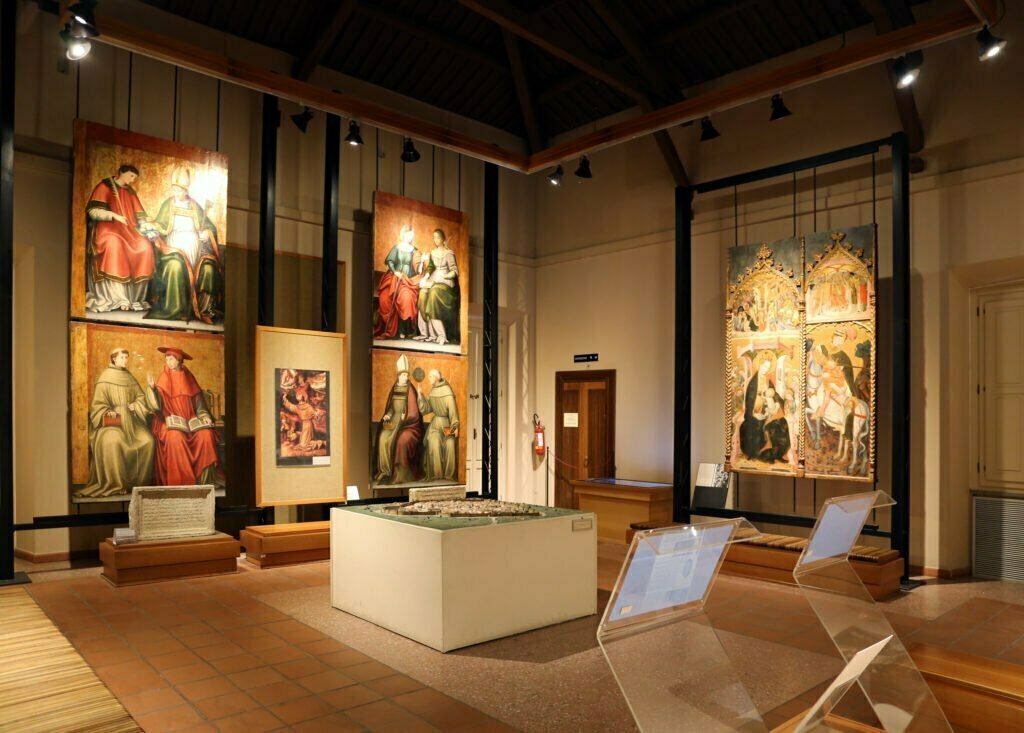

A Journey Through History
The Antiquarium Arborense offers a fascinating journey through millennia of history. Each artifact, each displayed object, is a testimony to the past, a piece that helps reconstruct the mosaic of Sardinian history.
The Collection
The museum’s collection is vast and varied, with artifacts from all over the Oristano region. You can admire prehistoric artifacts, Nuragic sculptures, Phoenician ceramics, Roman coins, and medieval relics. Each object has a story to tell, a piece of the past to share.
The Visit Experience
A visit to the Antiquarium Arborense is not only an opportunity to admire historical artifacts but also an educational experience. Thanks to detailed descriptions and illustrations, you can understand the historical and cultural context in which these objects were created and used.
Events and Activities
Besides the permanent collection, the Antiquarium Arborense regularly organizes temporary exhibitions, conferences, and workshops, visitors can see various aspects of Sardinian history and archaeology.
National Art Gallery of Sassari
In the city of Sassari, in the north of Sardinia, lies a true temple of art: the National Art Gallery. This museum, one of the most important on the island, offers an extensive pictorial exhibition ranging from the Middle Ages to contemporary art.
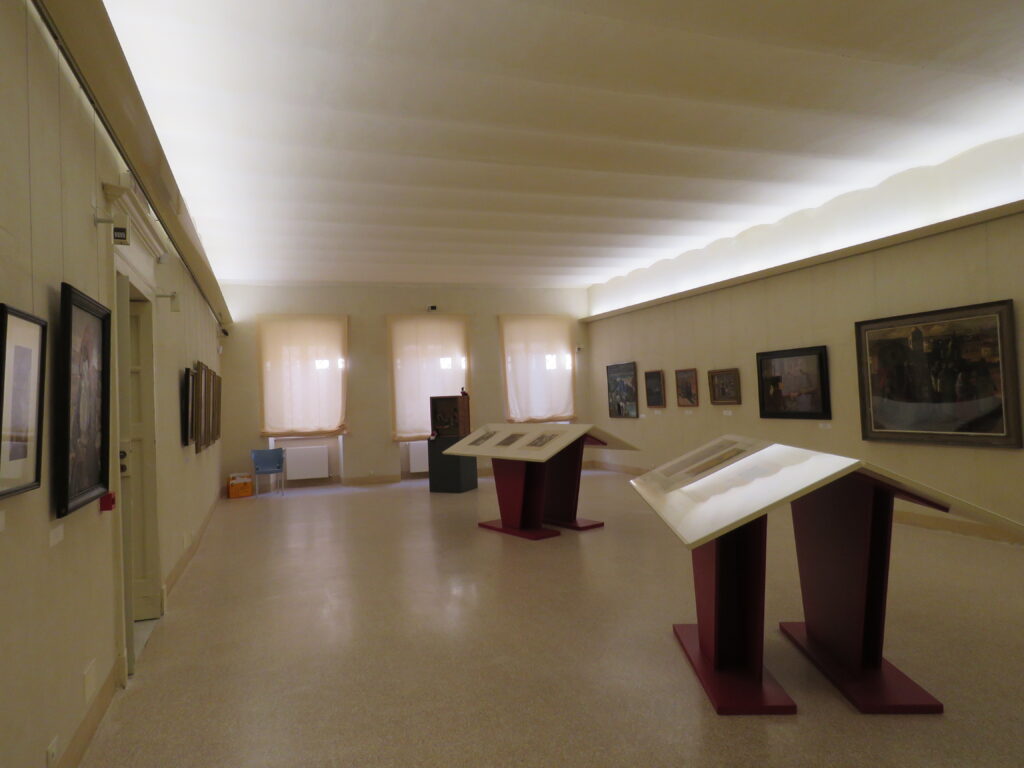

A Journey in Art
The National Art Gallery of Sassari offers a fascinating journey through centuries of art history. Each work, each painting, is a window onto a historical period, a piece that helps reconstruct the mosaic of Italian and European art.
The Collection
The museum’s collection is vast and varied, with works by both local and international artists. You can admire medieval paintings, Renaissance works, Baroque masterpieces, modern and contemporary art pieces. Each work is a piece of a puzzle that tells the story of art, from the past to the present.
The Visit Experience
A visit to the National Art Gallery of Sassari is not just an opportunity to admire artworks but also an experience of learning and sharing. Here, you can participate in guided tours, workshops, conferences, cultural events that will allow you to deepen your knowledge of art and share your discoveries and emotions with other visitors.
Antonio Gramsci’s House Museum in Ghilarza
In the small town of Ghilarza, in the heart of Sardinia, lies a dive into the history of Italian thought: the Antonio Gramsci House Museum. This museum, located in the house where Antonio Gramsci lived from the age of seven to twenty, offers the chance to discover the life and thought of one of the most important Italian intellectuals.
A Journey into Gramsci’s Life
The Antonio Gramsci House Museum is not just a place to admire historical objects but a place to discover the life of Antonio Gramsci. Here, you can walk through the rooms where he lived, see the furniture and objects he used, and discover the places and environments that influenced his thought.
The Collection
The museum’s collection includes a series of Gramsci’s personal items, including books, letters, photographs. Each object is a testimony to Gramsci’s life, a piece of a puzzle that helps understand his personality, his thought, his political and cultural commitment.
The Visit Experience
A visit to the Antonio Gramsci House Museum is not just an opportunity to admire historical objects but also an experience of learning and reflection. Here, you can participate in guided tours, conferences, cultural events that will allow you to deepen your knowledge of Gramsci’s life and thought.
Museums to Visit in Sardinia: Brief
| Museum Name | Location | Brief Description |
|---|---|---|
| Museo Archeologico | Cagliari | A journey through 7,000 years of history, from Prehistory to the Early Middle Ages. |
| Museo delle Maschere Mediterranee | Mamoiada | Immersion in the world of traditional Sardinian masks. |
| Museo MAN | Nuoro | Modern art exhibitions of national and international caliber. |
| Museo Archeologico | Olbia | Dive into the ancient past of the Olbia area. |
| Museo Etnografico Sardo | Nuoro | Immersion in Sardinian history and culture through traditional costumes. |
| MURATS | Samugheo | Textile story of Sardinia through artwork and temporary exhibitions. |
| Museo Archeologico | Dorgali | Close observation of 3,000 years of history in one day. |
| Casa Museo di Grazia Deledda | Nuoro | The birthplace of Grazia Deledda, the first female Nobel Prize winner for Literature. |
| Compendio Garibaldino | Caprera | Historical park hosting Garibaldi’s house. |
| Museo Civico Giovanni Marongiu | Cabras | Artistic journey from Prehistory to the Middle Ages with artifacts from all over Sardinia. |
| Museo La Stazione dell’Arte di Maria Lai | Ulassai | Contemporary artworks by artist Maria Lai. |
| Museo del Carbone | Carbonia | Discovery of an important piece of Italian mining history. |
| Ecomuseo Miniere Rosas | Narcao | Guided tours of its areas, including Geo-mineralogical and Historical Museum. |
| Museo Civico | Sinnai | Art experience, both ancient and modern. |
| Antiquarium Arborense | Oristano | Vast collection of archaeological finds telling the city’s and region’s story. |
| Pinacoteca Nazionale | Sassari | Wide pictorial exposition from the Middle Ages to contemporary art. |
| Casa Museo Antonio Gramsci | Ghilarza | Visit the house where Antonio Gramsci lived from age seven to twenty. |
Visiting these museums offers a unique insight into Sardinia’s rich and diverse history and culture. Whether you’re interested in archaeology, art, history, or textiles, Sardinia’s museums have something to offer for everyone.


